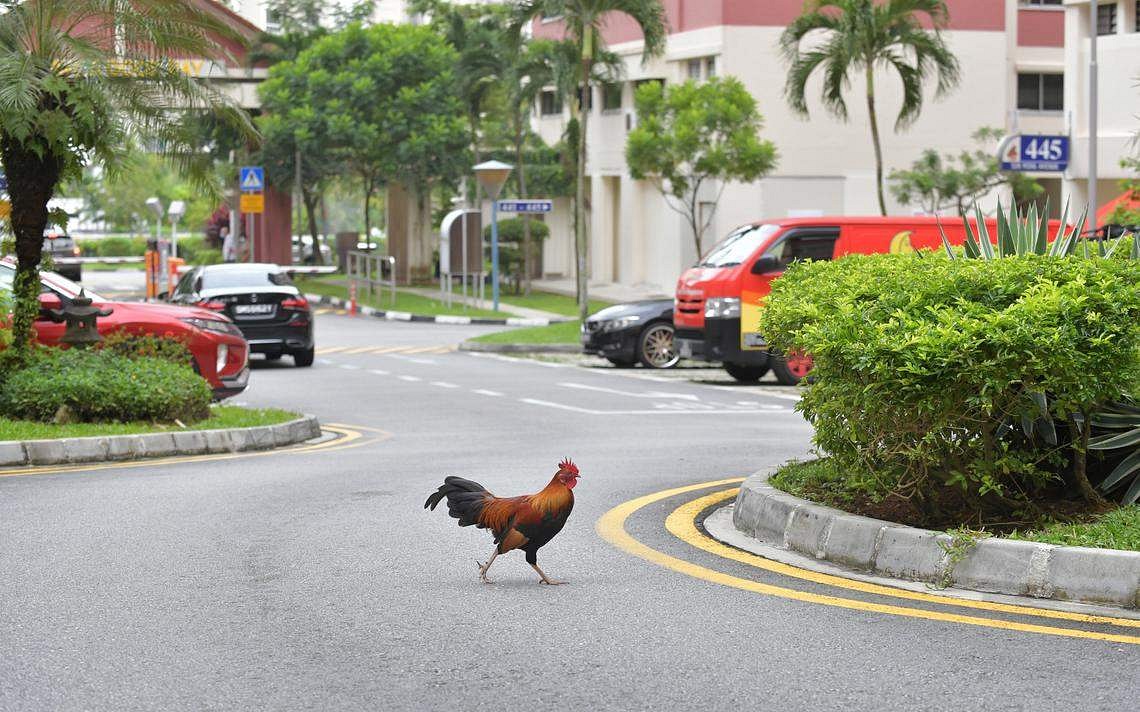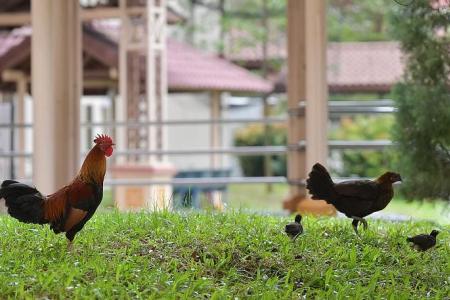Measures to reduce chicken population in Sin Ming effective so far
Measures taken to reduce the chicken population in Sin Ming Court have brought their number down to about 50, according to residents and a task force set up to deal with the issue earlier this year.
The task force’s chairman, Mr Goh Sim Cik, said Ovistop, a contraceptive feed, will be distributed at end October as an additional measure to lower the number.
“In December 2021, there were about 90 birds which was a problem but with the measures taken, we’ve managed to bring that number down to around 50 today,” said Mr Goh. The task force is aiming for around 30.
The authorities said in March that they would be taking a more consultative approach in managing the free-roaming chickens in the estate, after people cried “fowl” over the covert culling in 2017.
Over the past few years, some residents living in the estate’s 15 blocks have had their feathers ruffled by roosters crowing at all times of the day, occasionally as late – or early – as 2am.
On Oct 20, Minister for National Development Desmond Lee said in Parliament that following a review, the National Parks Board (NParks) will not be using contraceptive chicken feed to further tackle the issue.
He added: “ At this point, the use of Ovistop is not feasible as it requires continual and frequent feeding of the chickens to be effective.
“As for other methods... such as sterilisation, NParks will consider the efficacy, safety and humaneness of these measures, as well as their cost sustainability in the long-term.”
He was answering a question posed by Mr Chong Kee Hiong, an MP for Bishan-Toa Payoh GRC, who asked whether NParks would use Ovistop as the chicken relocation is progressing slowly.
Mr Goh said the constraints include finding willing hosts and farms, as well as the construction of cages when a suitable site is found. Thirty chickens have been sent to farms so far – 10 each in April, August and October.
Other measures tapped include a campaign to educate residents on the feeding of the chickens, an egg hunt, trimming the grass in areas near residences to dissuade the chickens from nesting, and installing nets on trees so that they do not roost.

Co-chair of the Animal Concerns Research and Education Society, Ms Anbarasi Boopal, said relocation would not prove a good solution in the long run and that the key to bringing down the population would be to reduce feeding the birds altogether.
When The Straits Times visited the estate on Saturday, the occasional rooster crows could be heard and small groups of chickens were seen scurrying across the patches of greenery among blocks.
A resident of 15 years, Mr George Giang, said the steps taken had been noticeable in curbing the chicken population.
The 40-year-old HR professional added: “It’s a bit quieter but I honestly am not bothered by them. Living here for so long, you get used to their presence and the crowing. Thankfully, I’m quite a heavy sleeper and so are my children.”
Another resident, financial adviser Samantha Yeo, 32, said the noise still bothers her.
“We stay on the 16th floor, and we can still hear them when they crow in the middle of the night. But at the same time, I don’t want to see the chickens all go, having them around for my daughter is a great way of exposing them to dealing with wildlife,” she added.
Get The New Paper on your phone with the free TNP app. Download from the Apple App Store or Google Play Store now


